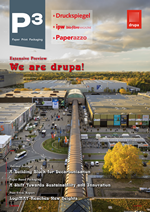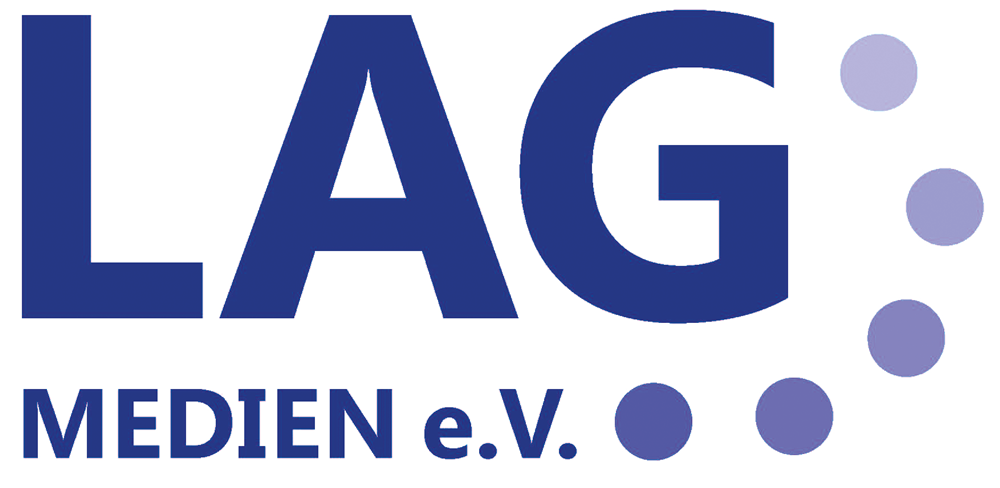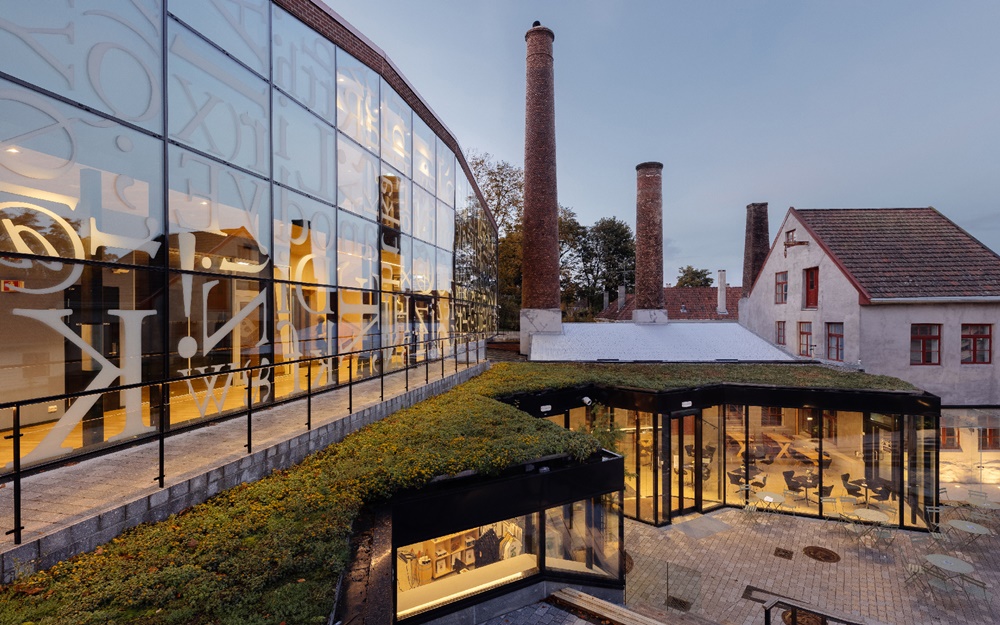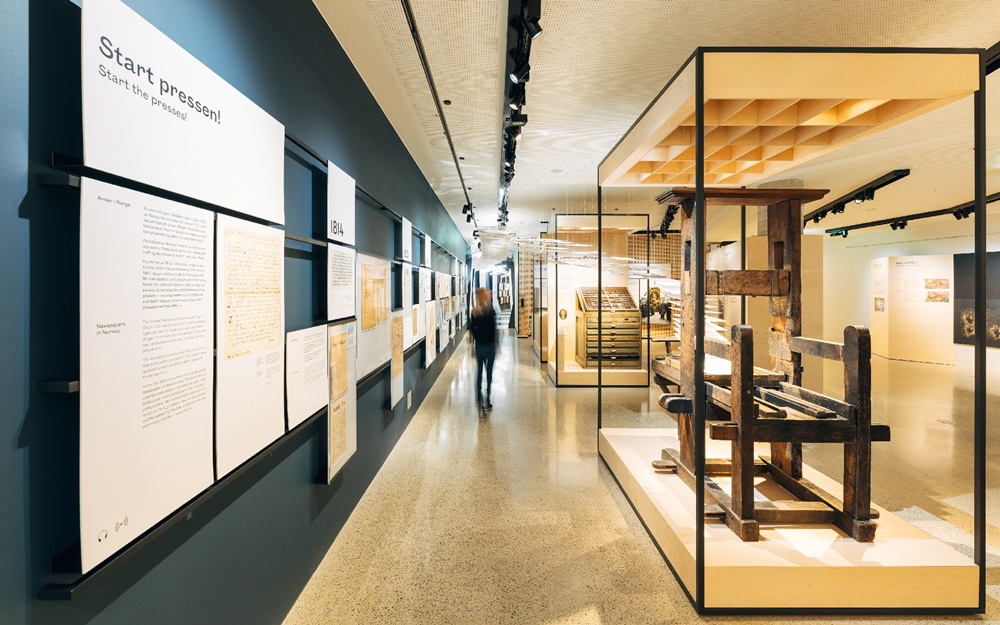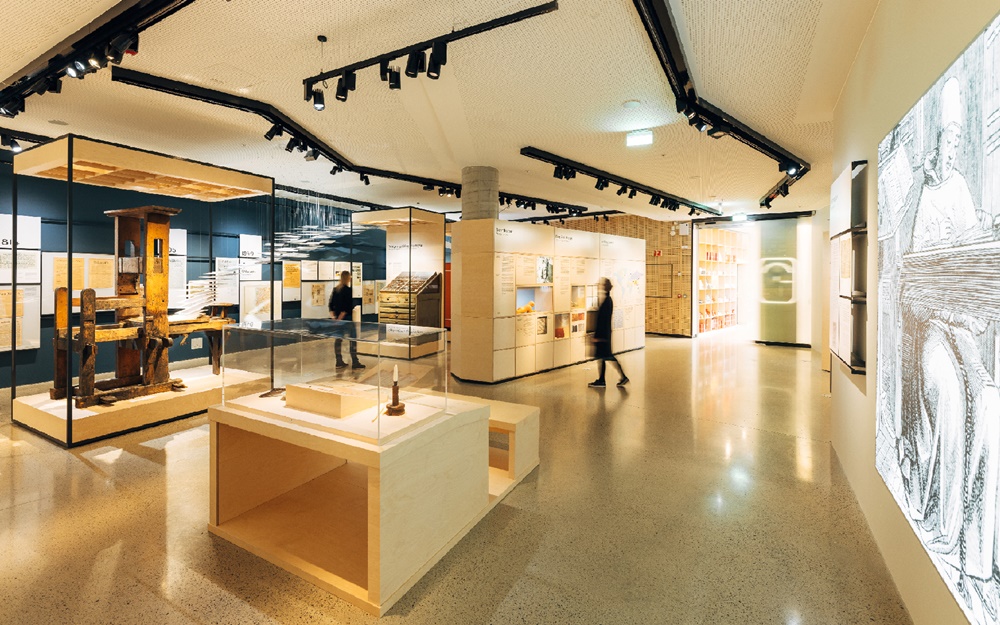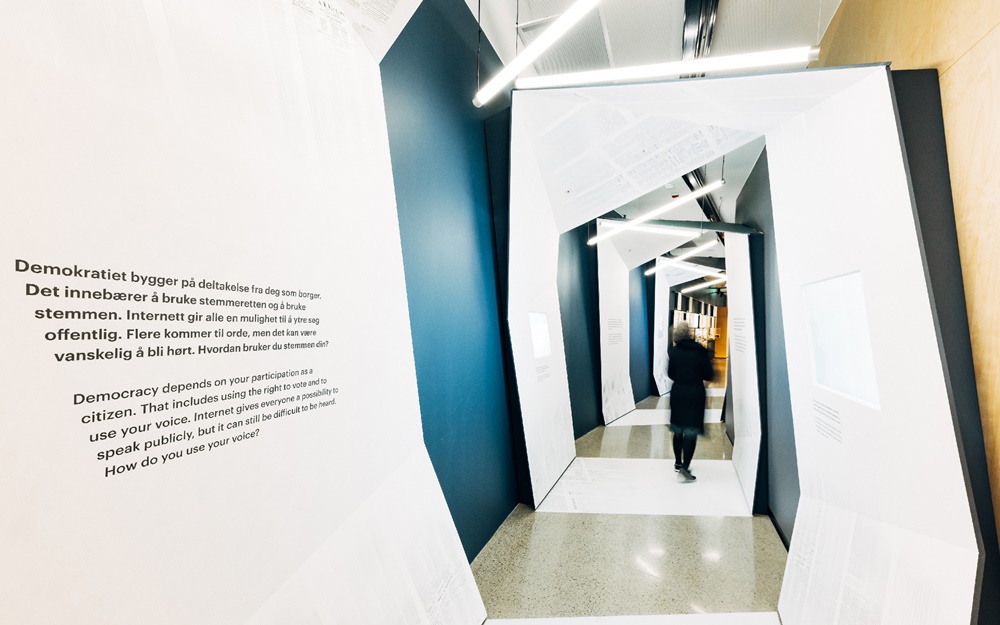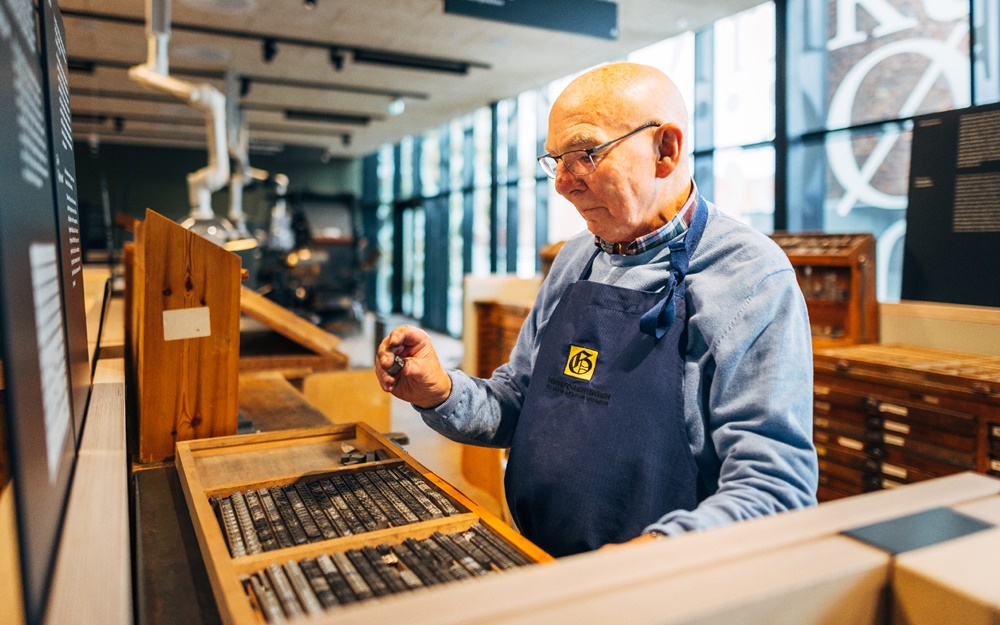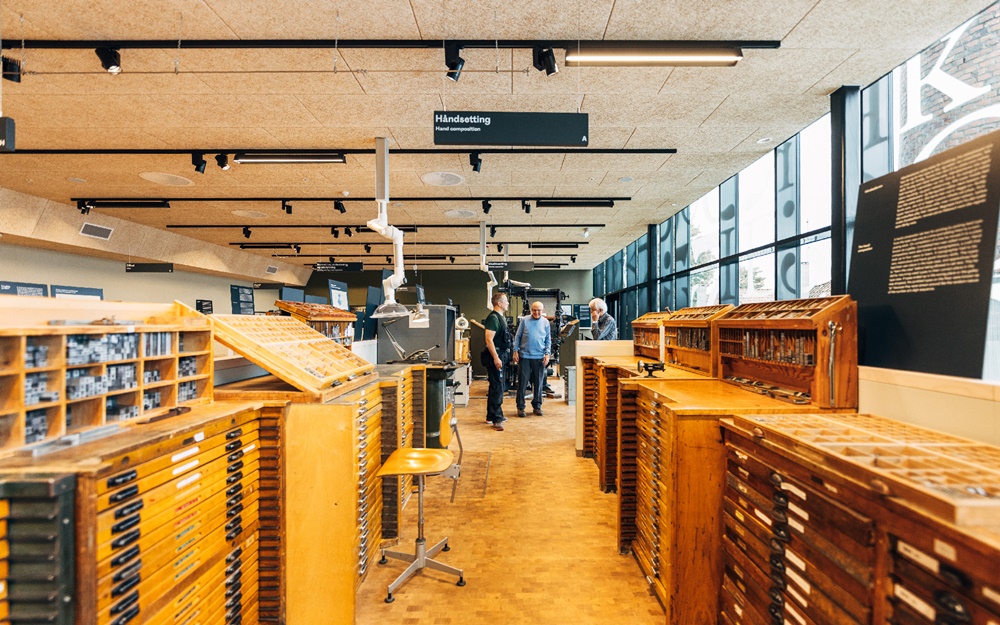P3 7-8/2021 en
Norwegian Printing Museum Opens
Text and Image in a Media Tunnel
Paper & People
The Norwegian Printing Museum has opened in Stavanger, Norway, on November 20th. It is located on the site of a former sardine can factory in the historic old town. The factory building is home to the Norwegian Canning Museum. It was architecturally expanded by Eder Biesel Arkitekter. The exhibition in the new building comes from Atelier Brückner. Both museums operate jointly under the Iddis brand, derived from iddikett, the word for label in the regional dialect.
IDDIS Norwegian Printing Museum and Norwegian Canning Museum. Exterior view.
The Norwegian Printing Museum spans more than 40,000 years - from the first human traditions in the form of cave paintings to the digital present. One focus is on the change in printing techniques for word and image - with regional and local references: In Stavanger, the art of printing flourished from the late 19th century, as the local canned fish production resulted in numerous print jobs. The label was of central importance for the marketing of canned fish. From Stavanger they were exported all over the world - until the 1950s. The exhibition offers playful access to more than a thousand sardine can labels. They are accessible digitally. In addition, the historic lithography stones, a lithography press, various printing rollers and the establishment of a photo laboratory are impressive. In a spacious workshop area, the Print Shop, on the upper floor of the museum, half a dozen historical printing machines can also be admired in action.
The museum exhibition extends over two large room units on the ground floor of the building, which are connected by a shared media tunnel. The staged corridor is the climax of the course. It can be approached from both sides. The course is arranged chronologically: If the visitor enters the museum from the Canning Museum, the first exhibition room deals with the reproduction of the image with a focus on lithography and photography. A flood of images rises from a camera, spiraling into the present in the media corridor and then leading back to a Gutenberg printing press, accompanied by daily newspapers, typewriters and early computers.
The printing press is the central exhibit in the second exhibition room. In terms of content and space, it is the turning point: with the invention of movable type, the widespread distribution of printed matter was possible from 1450 onwards. Printed sheets of paper shoot up out of the press and into the media tunnel, leading to today's e-publishing.
Before the printing industry established itself, the scriptorium was the central place for written reproduction. It is - equivalent to the printing press - staged as a spatial unit.
The exhibition rooms are structured using cubic wooden shelves. The cubes can be individually combined and equipped with exhibits or even printed. Type cases in which the letters of the printing industry found their place are the guiding principle of this classification system. The print shop on the upper floor of the building is also designed to be flexible: the topic texts and the labels on the exhibits are printed on boards. They are tucked into wooden strips around the exhibition space and into the chest-high zoning that separates individual subject areas from one another: Different printing processes are used for comparison. Typesetting and bookbinding are also topics. Stavanger's printing industry with its rattling marvels continues to fascinate even the present.
The exhibition is open Tuesday to Friday: 11 a.m. to 3 p.m., Thursday also 3 p.m. to 7 p.m., Saturday and Sunday 11 a.m. to 4 p.m.
Address
IDDIS Norwegian Printing Museum and Norwegian Canning Museum
Andasmauet 15
4005 Stavanger
www.iddismuseum.no/en

